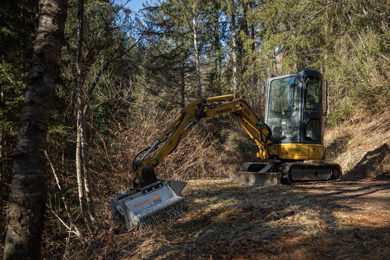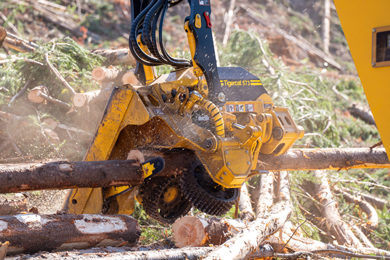South-east Australia’s natural forests are among the most carbon dense in the world and store three times more carbon than Australian and international climate change experts realise, a world-first study released today at The Australian National University revealed.
The largest stocks of carbon are found in the tall wet eucalypt forests of Victoria and Tasmania. These forests support trees up to 80 m tall and can contain more than 1,200 t of carbon/ha, which is up to 10 times more carbon/ha than previously realised. ANU scientists have calculated that the average amount of carbon stored in unlogged natural eucalypt forests is about 640 t/ha. According to the leading worldwide climate change scientific body, the Intergovernmental Panel on Climate Change, the average carbon stock in temperate forests is only 217 t/ha. The findings represent a breakthrough in understanding the role of forests in long term carbon storage and in helping solve the climate change problem. The authors – Professor Brendan Mackey, Dr Heather Keith, Dr Sandra Berry and Professor David Lindenmayer – found that a new approach is needed to account for carbon stored in natural forests. “Reducing emissions from deforestation and forest degradation in developing countries has been the focus for the international community since the United Nations climate change conference in Bali last December, but this is also an issue for Australia,” Professor Mackey said. About half of Australia’s forests have been cleared in the last 220 years and the carbon stocks in more than 50 per cent of the remaining unprotected forests have been degraded by land use activities such as logging. Professor Mackey said the research should alert Australian governments and international agencies of the urgent need to protect the carbon stored in natural forests as part of the suite of measures needed to solve the climate change problem. “Protecting the carbon in Australia’s and the world’s natural forests is no longer an option – it is a necessity,” Professor Mackey said. “If natural forests continue to be cleared and degraded then the C02 released will significantly increase concentrations of greenhouse gases in the atmosphere.
The carbon stored in natural forests is a larger and more reliable stock than the carbon stored in commercially logged forests and plantations.” The research from the Fenner School of Environment and Society at ANU found that around 9.3 Bt of carbon can be stored in the 14.5 Mha of natural eucalypt forests in south-east Australia if they are left undisturbed. The carbon currently stored in these forests is equivalent to “avoided emissions” of 460 million tonnes of CO2/y for the next 100 years.






